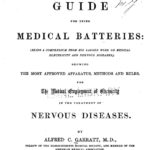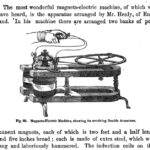Update 2/17/17 BBC The strange Victorian fashion of self-electrification

If you’ve been following along very closely you may recall that podcast episode #6 guest Anna Wexler mentioned in passing that she had been researching Ye Olde practice of therapeutically applying current to various parts of the body. Well, an early version of a new paper of hers landed the other day: Recurrent themes in the history of the home use of electrical stimulation: Transcranial direct current stimulation (tDCS) and the medical battery (1870–1920). It’s behind a paywall but here are some highlights.
- Although the home use of tDCS is often referred to as a novel phenomenon, in reality the late nineteenth and early twentieth century saw a proliferation of electrical stimulation devices for home use.
- In particular, the use of a portable electrotherapy device known as the “medical battery” bears a number of striking similarities to the modern-day use of tDCS.
- Many features related to the home use tDCS—a do-it-yourself movement, anti-medical establishment themes, conflicts between lay and professional usage—are a repetition of themes that occurred a century ago with regard to the medical battery.
- A number of features seem to be unique to the present, such as the dominant discourse about risk and safety, the division between cranial and non-cranial stimulation, and utilization for cognitive enhancement purposes.
- Viewed in historical context, the contemporary use of electrical stimulation at home is not unusual, but rather the latest wave in a series of ongoing attempts by lay individuals to utilize electricity for therapeutic purposes.
Also: the full patent file for that image is here: https://t.co/vvqp8sQfuC … other interesting images there too
— Anna Wexler (@anna_wexler) December 3, 2016
Lots of ‘medical battery’ patents here.
And a ton of wonderful images to be found in books in Google’s digitized library.
Most of these came from a single book!















